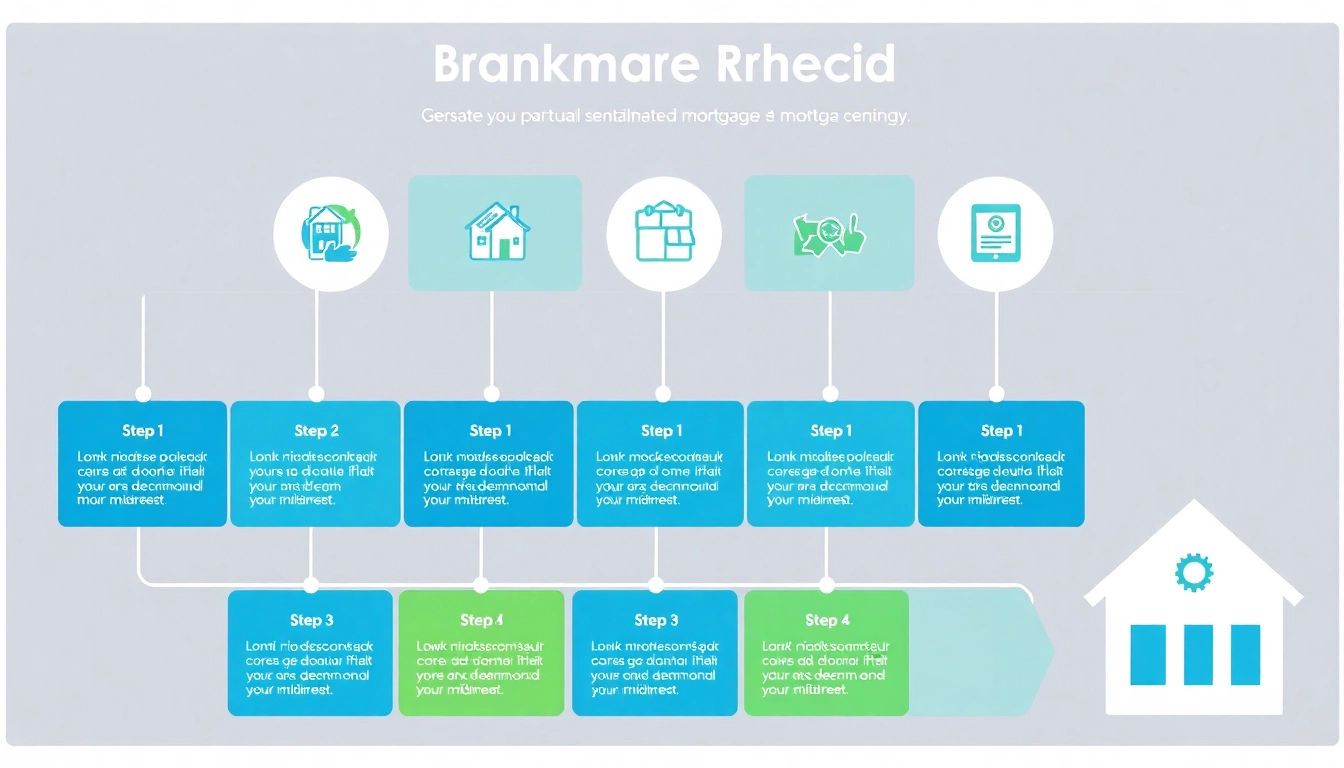Introduction to the Mortgage Process for Lenders
The mortgage process is a complex but essential component of the home-buying experience, not just for borrowers but also for lenders. Understanding the mortgage process for lenders is crucial for improving operational efficiency and enhancing customer satisfaction. With varying regulations, borrower needs, and lender requirements, lenders must navigate through a myriad of stages to provide appropriate financing solutions. Whether it’s a new purchase, refinancing, or securing home equity, each mortgage transaction involves critical steps that require meticulous attention and understanding.
What is the Mortgage Process?
The mortgage process can be defined as the systematic series of steps that both lenders and borrowers go through to acquire a loan for a home purchase. This journey starts from initial pre-approval, progresses through application and underwriting processes, and culminates in the final closing of the loan. Essentially, this process facilitates the necessary funding for real estate transactions by establishing the terms under which the lender agrees to lend.
Key Players in the Mortgage Process
The mortgage process involves several key players, each with distinct roles:
- Lenders: These are banks, credit unions, or other financial institutions that provide the funds for the mortgage.
- Borrowers: Individuals or entities seeking financing to purchase property.
- Real Estate Agents: Professionals who assist buyers in finding and negotiating for properties.
- Appraisers: Individuals who provide an objective assessment of the property value.
- Underwriters: Lenders’ representatives who assess the risk of lending to the borrower.
Importance of Pre-Approval
Pre-approval is a crucial step for both lenders and borrowers. For lenders, pre-approval helps gauge the risk involved with lending to a specific borrower, while it gives borrowers a clear understanding of how much they can afford. This step can also expedite the overall mortgage process, as pre-approved buyers often face fewer hurdles when it comes time to secure financing.
Step 1: Pre-Approval in the Mortgage Process
Gathering Documentation
The pre-approval step starts with documentation. Lenders require a range of documents that may include:
- Proof of income: Pay stubs, tax returns, and W-2 forms.
- Credit report: A complete credit history check to assess creditworthiness.
- Employment verification: A confirmation of employment status and duration.
- Asset verification: Bank statements and investment accounts to evaluate financial stability.
Collecting and organizing these documents efficiently saves time later on in the mortgage process.
Assessing Buyer Eligibility
Once documentation is submitted, lenders assess the borrower’s eligibility based on several factors:
- Credit Score: Generally, a higher credit score indicates a lower risk for lenders.
- Debt-to-Income Ratio (DTI): A calculation where the total monthly debt is divided by gross monthly income, critical in determining affordability.
- Employment History: Stability in employment assures lenders of steady income streams.
Understanding Pre-Approval Timelines
The timeline for obtaining pre-approval can vary widely but usually takes one to three days. Factors influencing determining timeframes include the lender’s operational efficiency and the completeness of the submitted documentation. Timely action from the borrowers in providing necessary documents can significantly speed up this process.
Step 2: Home Shopping and Offer Making
Finding the Right Property
Once pre-approved, borrowers can start shopping for homes. They often work closely with real estate agents to find properties that meet their needs while adhering to their financial constraints. Having a pre-approval letter gives buyers an advantage in competitive markets, as it demonstrates to sellers their seriousness and financial capability.
Making Competitive Offers
When a buyer finds a suitable home, they will typically make an offer.Lenders play a supportive role by providing relevant market insights and helping clients establish a competitive offering price that aligns with the property’s appraised value. It is important for lenders to advise buyers on structuring offers that may include contingencies and earnest money deposits to protect their interests.
Negotiating with Sellers
In the negotiation phase, both parties must be willing to compromise. Lenders can assist by providing insights into potential financing terms and by helping buyers evaluate offers using their financial criteria, further ensuring negotiations align with both parties’ goals.
Step 3: Completing the Mortgage Application
Types of Mortgage Applications
The mortgage application can vary depending on the type of loan being sought. Common types include:
- Conventional Loans: Typically require higher credit scores and down payments.
- FHA Loans: Designed for low-to-moderate income borrowers; often accompanied by lower down payment requirements.
- VA Loans: Beneficial for veterans with attractive terms and no down payment.
Submitting Financial Documentation
Alongside the mortgage application, borrowers must submit the same documentation required for pre-approval, ensuring lenders have a complete view of their financial situation. This includes various forms of identification, income documentation, and asset statements.
Common Application Mistakes to Avoid
Many applicants make common mistakes during the application process which can delay approval or lead to denial. Avoid the following pitfalls:
- Failing to disclose all debts, which could mislead underwriters.
- Changing jobs or making large purchases during the application process.
- Providing incomplete or outdated documentation.
Step 4: Underwriting and Closing the Loan
The Underwriting Process Explained
Underwriting is a critical phase where the lender decides whether to approve or deny the loan application based on a thorough analysis of the borrower’s financial profile and property appraisal. The underwriter assesses creditworthiness, income stability, and the property’s value to determine risk.
Final Loan Documentation
Upon approval, the lender prepares the final loan documentation for the closing process. This includes the loan agreement detailing terms and conditions that both parties must understand before signing.
Closing Costs and Final Steps
Closing involves several final steps, including the signing of legal documents, payment of closing costs, and distribution of funds. Closing costs can vary based on the lender and location but typically range between 2% and 5% of the loan amount. Understanding these costs is vital as they can impact the total financing amount and the borrower’s financial commitment.



